A world-famous tourist resort north of Agios Nikolaos, with lacy, windless sandy beaches, crystal clear…
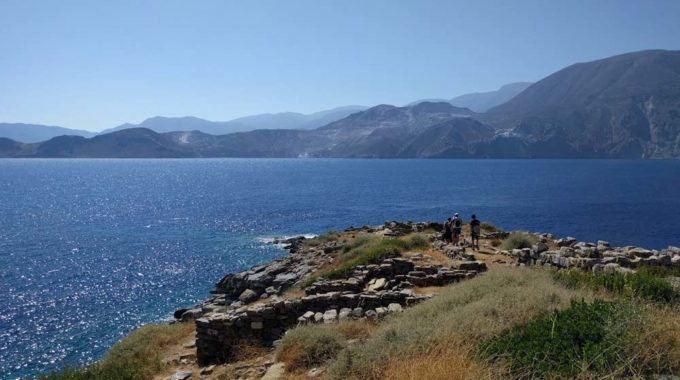
The island of Psira
It is a small island ίn the north west of Mochlos that you can visit by boat from Mochlos or Agios Nikolaos. It is uninhabited now and barren.The name has alternative spellίngs and must have come about because the shape of the island seemed to resemble that of a louse ( psira : louse). South-west of the island, tucked into the corner of the bay of Merambello, is another tiny island called Konida – «the nit».
In Psira a Minoan settlement of 15-20 acres has been found, being one of the most important sites in Crete.
The small Minoan town on the island of Psira was first excavated by the American archaeologist Richard Seager in the first decade of the 20th century and more recently by Philip P. Betancourt and Costis Davaras, whose work from 1986 provides much of the information. The town began life as a small settlement as early as the Final Neolithic period and continued to grow throughout the Minoan period, reaching its highpoint during the Late Minoan IB period (1500-1450 BCE) when the Minoan palaces were also at their height.
House of the Rhyta
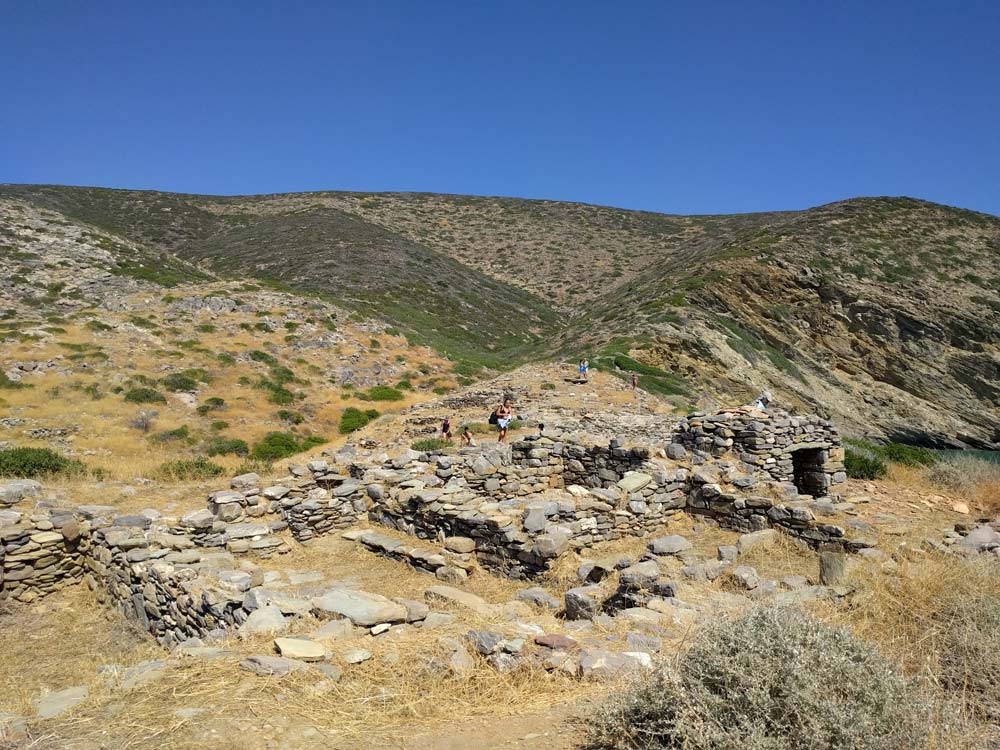 Excavation at the House of the Rhyta disclosed evidence for some Minoan cult practice that add to our understanding of some Minoan rites, though the core meaning they evoked escapes us. In three different structures cult activity involved the use of rhyta, drinking vessels in several forms, all with a hole at the base, a bull-shaped vessel, triton shells, and chalices, and a large number of cups. “Cult practices involving large numbers of rhyta continued into successive periods in the Late Bronze Age, as is demonstrated by an interesting religious structure at Ugarit (modern Ras Shamra, Syria) with 15 rhyta, including Mycenaean and Minoan examples,” Betancourt observes. Chemical traces in a rhyton suggest barley, beer, and wine. All of these ritual vessels were stored in between their periodic seasonal use, when large groups would gather in upper-floor rooms that had lime-washed and painted stucco reliefs on the walls and a floor that was ritually whitewashed (in the building fronting the plateia) or paved with stone slabs (House of the Rhyta). In the House of the Rhyta, there was a kitchen space below, too substantial for the occupants of the building alone; it had a corner hearth, a mortar built into bedrock in the opposite corner, and grinding rocks. The drinking rites that were observed in the upper room were apparently accompanied by feasting.
Excavation at the House of the Rhyta disclosed evidence for some Minoan cult practice that add to our understanding of some Minoan rites, though the core meaning they evoked escapes us. In three different structures cult activity involved the use of rhyta, drinking vessels in several forms, all with a hole at the base, a bull-shaped vessel, triton shells, and chalices, and a large number of cups. “Cult practices involving large numbers of rhyta continued into successive periods in the Late Bronze Age, as is demonstrated by an interesting religious structure at Ugarit (modern Ras Shamra, Syria) with 15 rhyta, including Mycenaean and Minoan examples,” Betancourt observes. Chemical traces in a rhyton suggest barley, beer, and wine. All of these ritual vessels were stored in between their periodic seasonal use, when large groups would gather in upper-floor rooms that had lime-washed and painted stucco reliefs on the walls and a floor that was ritually whitewashed (in the building fronting the plateia) or paved with stone slabs (House of the Rhyta). In the House of the Rhyta, there was a kitchen space below, too substantial for the occupants of the building alone; it had a corner hearth, a mortar built into bedrock in the opposite corner, and grinding rocks. The drinking rites that were observed in the upper room were apparently accompanied by feasting.
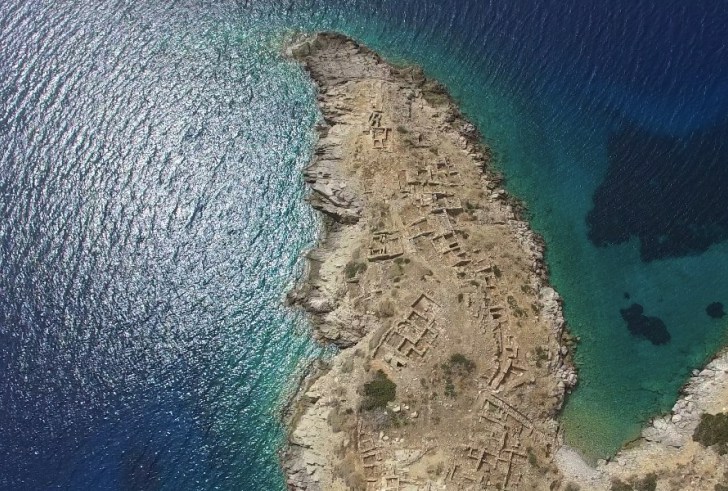
Numerous very good finds οf the Minoan era were discovered especially pots. The settlement was twice destroyed once due to an earthquake and after that by the volcanic eruption on Santorini.
Psira island Video
Additional Info
Location: Agios Nikolaos Region – 12 km from Agios Nikolaos and 4 from Mochlos
Area: 1,5 km² Max length: 2,35 km
Access: Boat from Mochlos
Residents: 0
Highest point: 79m
Psira island Gallery
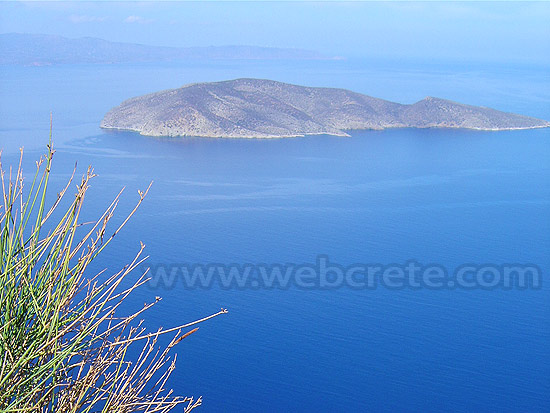
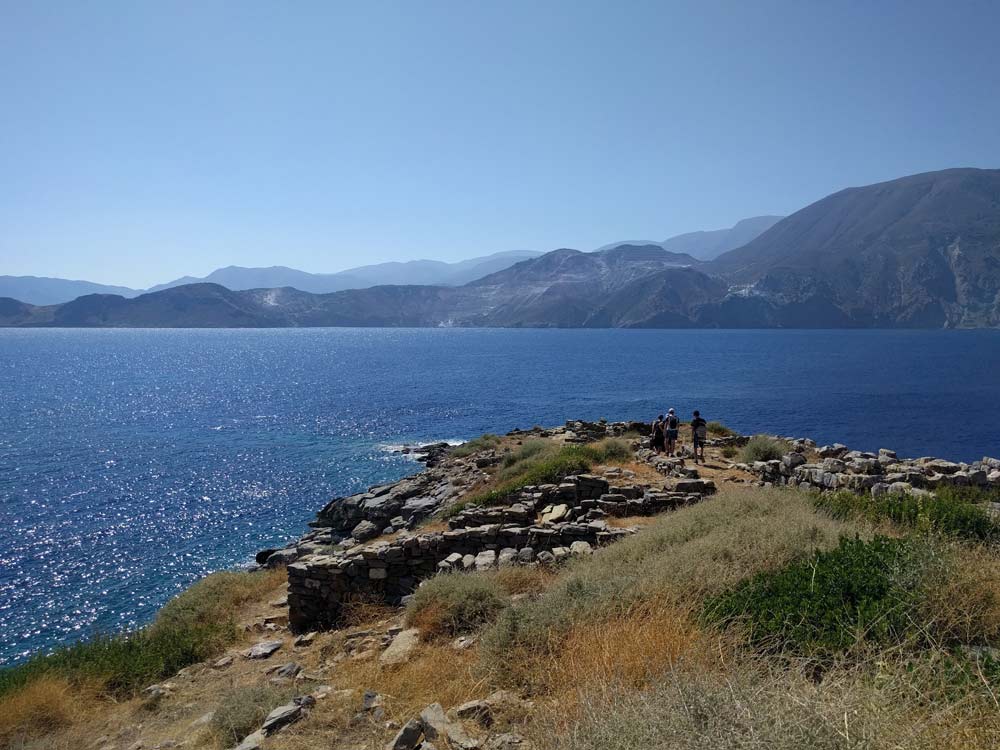
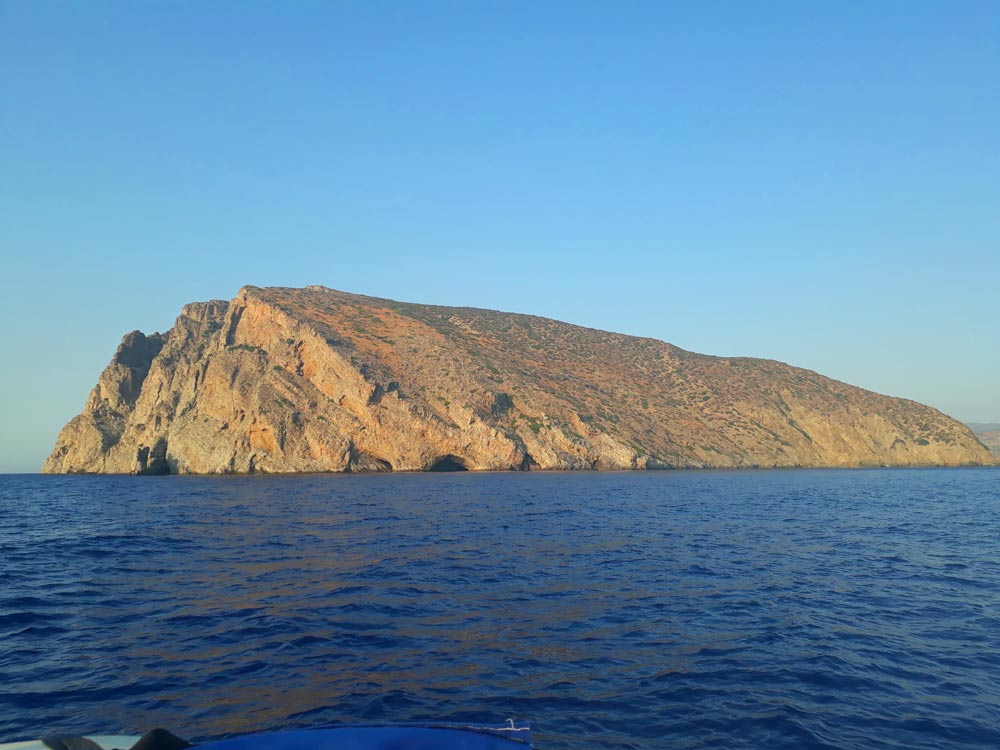
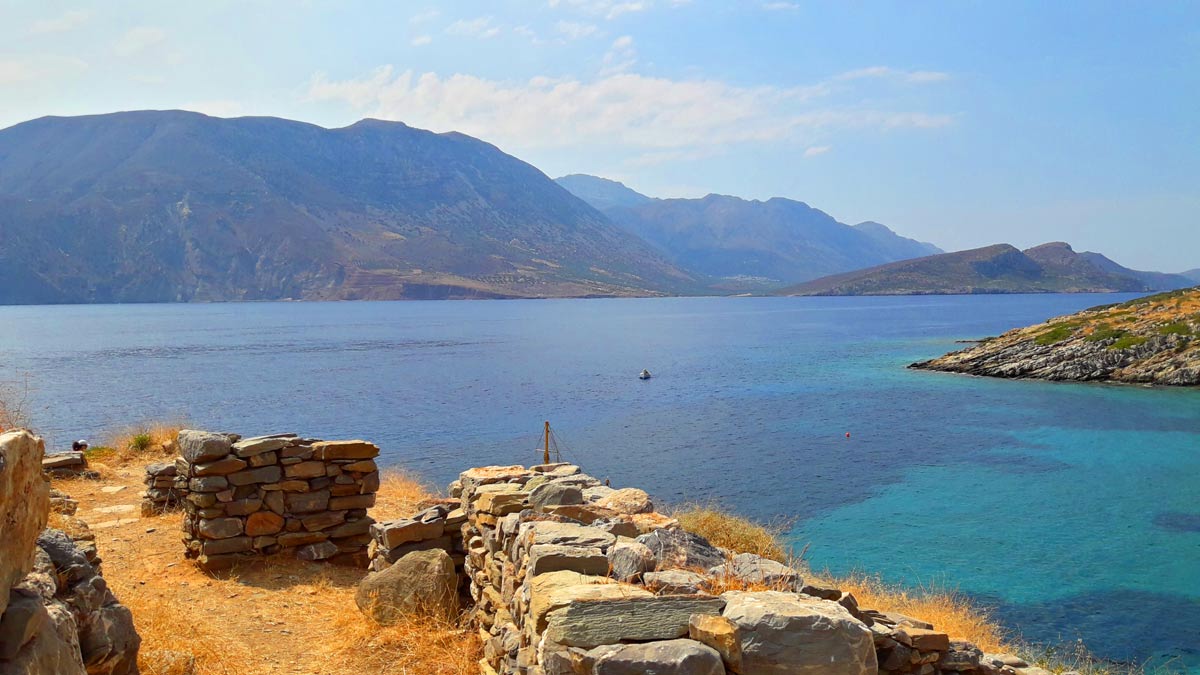
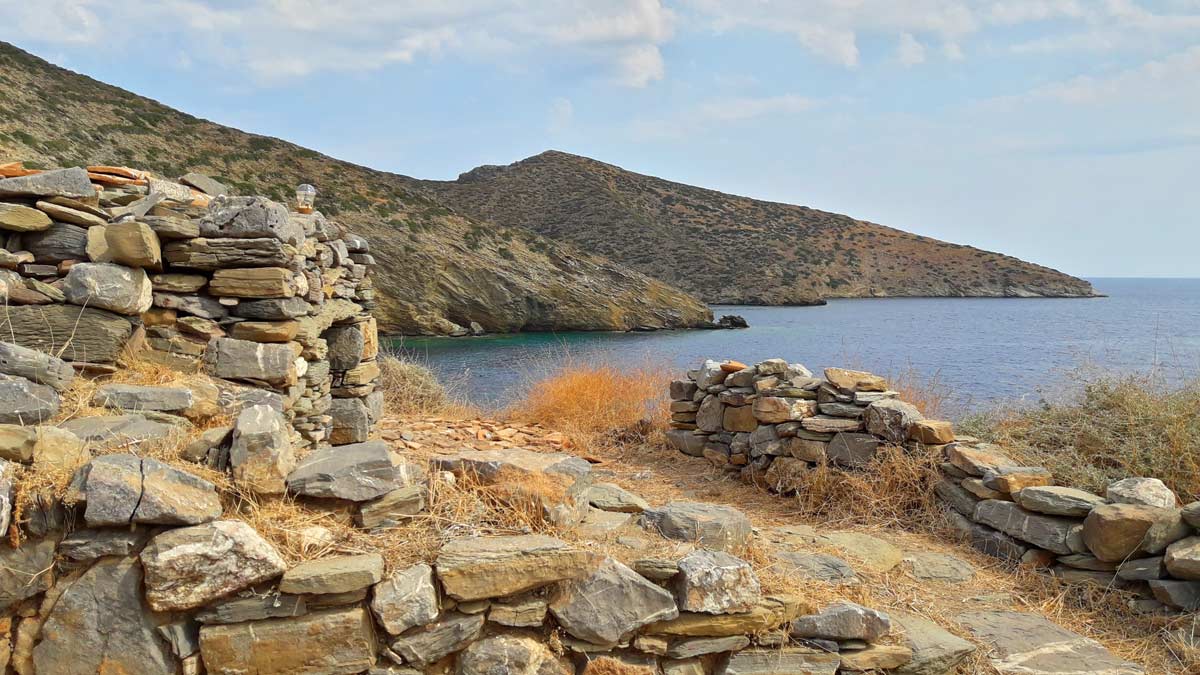
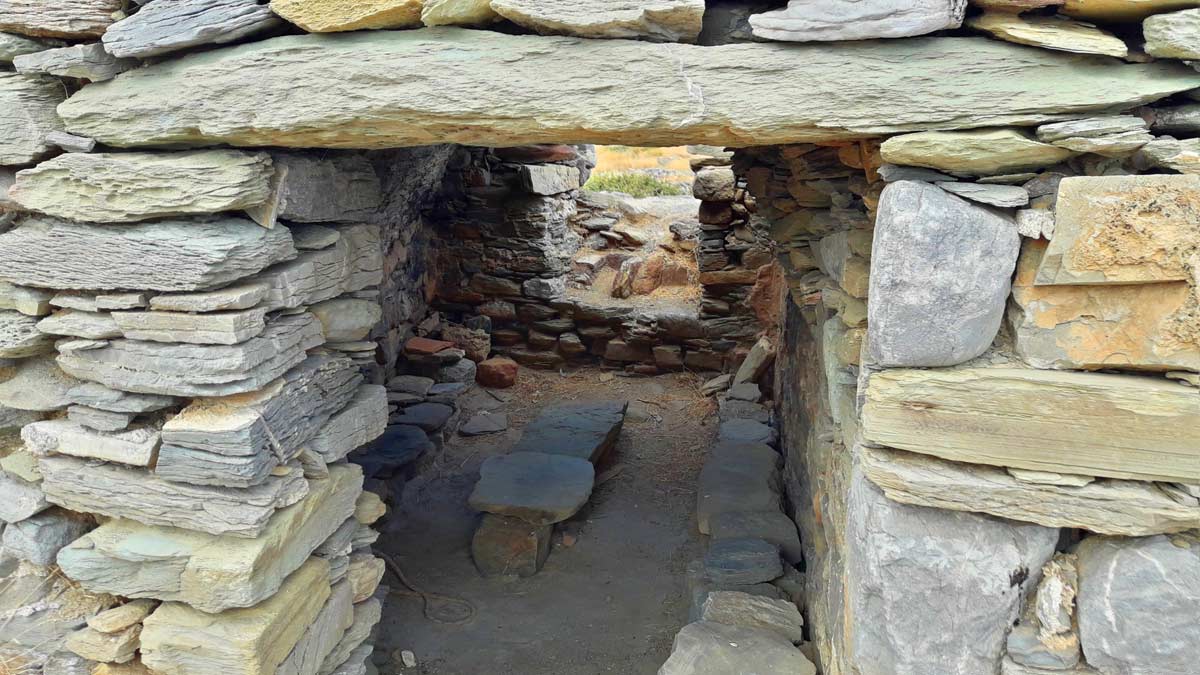
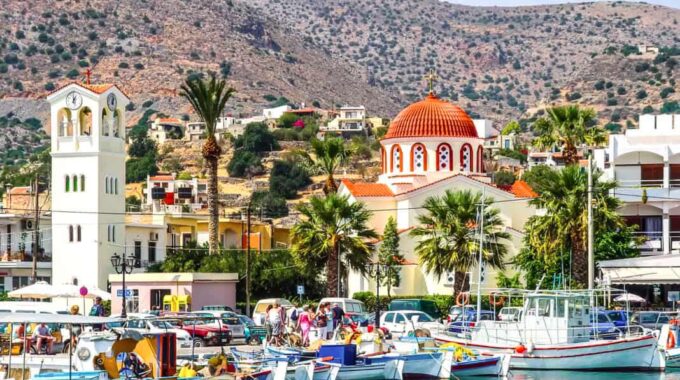
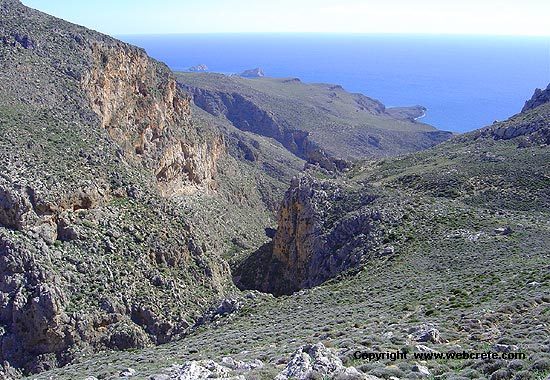
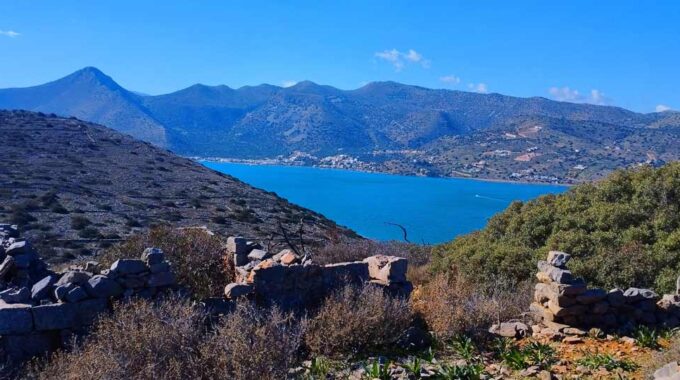
This Post Has 0 Comments